A Jaunty Excursion into the City’s North Rural Areas
TEXT / RICK CHARETTE
PHOTOS / VISION
A peaceful getaway by the Taiwan Strait in the Southwest Coast National Scenic Area and in the central-mountain foothills in the Siraya National Scenic Area
Foreign visitors to Taiwan with a taste for history touring love the old city of Tainan, which through almost the entire Qing Dynasty period was Taiwan’s capital. Locals often proudly refer to their home as “Taiwan’s Kyoto.” Taiwan’s economic locus began to shift to the island’s north in the late 19th century, and Taipei was declared the new capital. Tainan thereafter, to a large extent, became a memory.
Until the past few decades. Today the central government is much more focused on spreading Taiwan’s economic honey around more equitably, and the exploding middle class created by Taiwan’s “economic miracle” has resulted in unquenchable thirst for new tourism stimuli. Tainan has worked hard at sprucing itself up, and today a rich trove of renovated historical architecture exists in pleasant harmony with its gleaming new vault of architectural attractions.
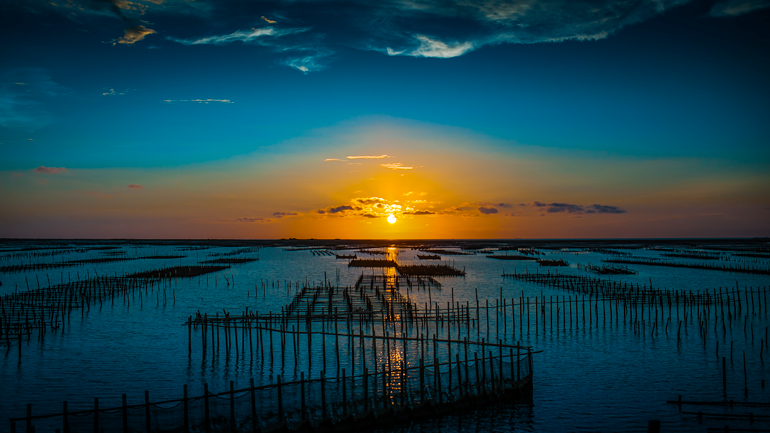
But there is much more to the name “Tainan” than the old urban center – Taiwan’s oldest. In 2011 the city was expanded, eating up surrounding rural districts, and today extends from the Taiwan Strait and across the western plains right up into the foothills of the central mountains. Most tourists who decide to spend time in Tainan concentrate on the dense cluster of heritage architecture in the urban core, but these outlying districts offer rich rewards for the inquisitive traveler as well, and in this article we spend a few days in the north region, starting off by the breezy sea and then zipping up into the front-door foothills, the farm-carpeted plains laid out below, off in the distance.
By the Sea – Imperial-Era Salt Fields & An Old-Time Fishing Village
The flat, silt-created coastal section above Tainan’s core has been sculpted into a tapestry of fish farms, heritage salt pans, and tidal-bay oyster farms. This region was among the earliest in Taiwan to be developed by settlers from China. In recent decades Mother Nature the artist has been allowed to retake previously farmed areas where land subsidence has occurred, in part caused by earthquake activity, washing over water-logged farmland to form “new” wetlands, adding to the beauty of the wetlands, lagoons, and estuary areas, large and small, never fully tamed.
Jingzaijiao Tile-paved Salt Fields
Beimen District is spread out along the Taiwan Strait in the city’s northwest. Just south of the fishing village of Beimen are the Jingzaijiao Tile-paved Salt Fields, Taiwan’s oldest salt fields, created in 1818. This site is a showcase example of how the bottom of evaporation ponds were paved with pottery shards, producing cleaner salt and making harvesting easier. Demonstration workers show how everything is done, and you can also do you own DIY salt-cone piling, so wear proper shoes.


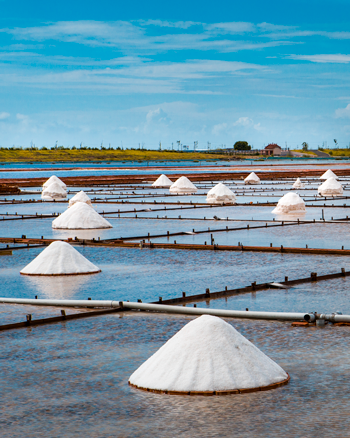
Climb either the on-site viewing tower or the surrounding protective sea dike for splendid views of oyster-farm racks spread out in the intertidal zone, birds domestic and migratory swirling by the hundreds and sometimes thousands, local fishing craft heading out to coming back from open water, and freighters on missions looking like steel islands far out in the strait. Be sure as well to take time to walk around the tiny old hamlet located beside the salt fields, and note the coral used in house-wall construction. In imperial days junks would deliver salt to the Penghu Islands in the Taiwan Strait, and Penghu coral was used as ballast for the return trip, thus delivering a free house-building material for local residents.
Beimen
The attractions of Beimen itself, a sleepy, laid-back fishing village, are well worth an hour or two of your time – notably the Beimen Visitor Center, Qianlaiye Shop, Taiwan Black Foot Disease Memorial Hall, and Yonglong Canal, all within easy walking distance of each other. The center, in a converted salt warehouse that was part of a large refining plant, has extensive displays (with English) on the region’s history, culture, and ecology. The shop building, originally housing a company-run grocery for salt-industry workers, now houses a handicrafts gift shop. The memorial hall is housed in the area’s oldest clinic for black-foot disease treatment; the disease prevailed along the southwest coast in the 1950s/60s, caused by the drinking of waters laden with heavy metals from wells dug deep into the earth to bypass the salt-laden soil nearer the surface.
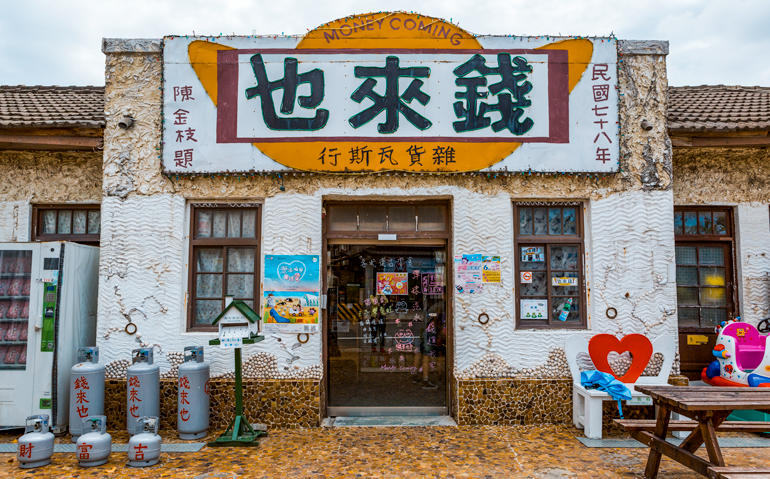
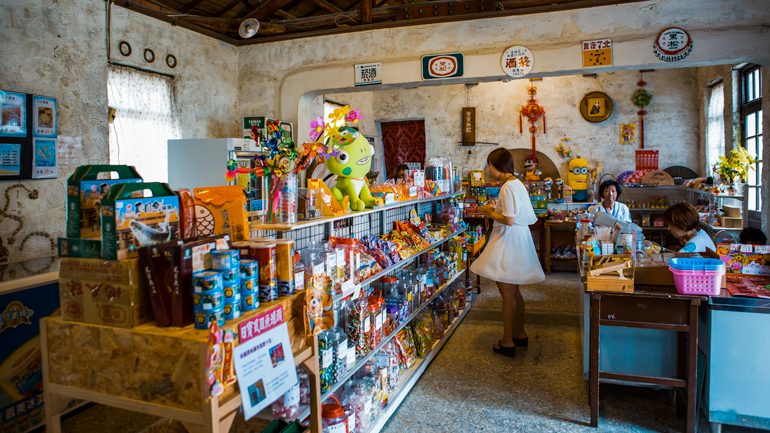

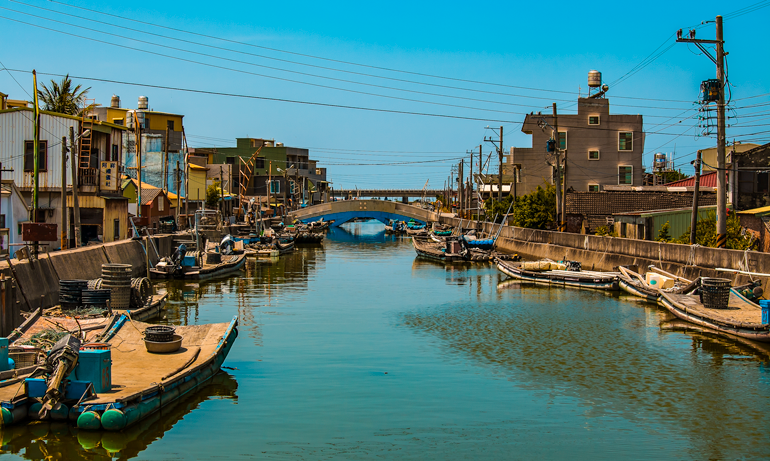
Up in the Hills – Beloved Hot-Spring Town, Poetically Scenic Reservoir, Colonial History
Guanziling
A pleasant farm-country run almost directly across the Jianan Plain from Beimen brings you to the foot of the central mountains. The quiet town of Guanziling awaits up from the western floor, high up along a narrow valley that opens to the plains. Mention Guanziling to any Taiwan adult and the automatic response is “hot springs.” Taiwan’s only mud springs are here. You can visit the two sources at the town’s bottom, emerging directly from the mountainside. The mineral-rich mud is highly prized, thought to be therapeutic, and limited in quantity. Hotels and other local hot-spring bathing enterprises apply annually for their allotment.

Red Leaf Park
Guanzling is one of Taiwan’s major hot-spring resorts, opened up by the soak-loving Japanese when they controlled Taiwan (1895-1945). It was from the Japanese that Taiwan’s people acquired their own love of the hot-spring culture. High, green-foliage slopes surround the town, and on a promontory above is the pretty, Japanese-designed Red Leaf Park. Filled with old-growth trees, purple-crow and other butterflies flit about in large number, feasting on the colorful flowers and blooming shrubs. A moderate-grade road takes you from town to park, the 25-minute walk done by many visitors, especially the elderly, hiking staffs in hand.
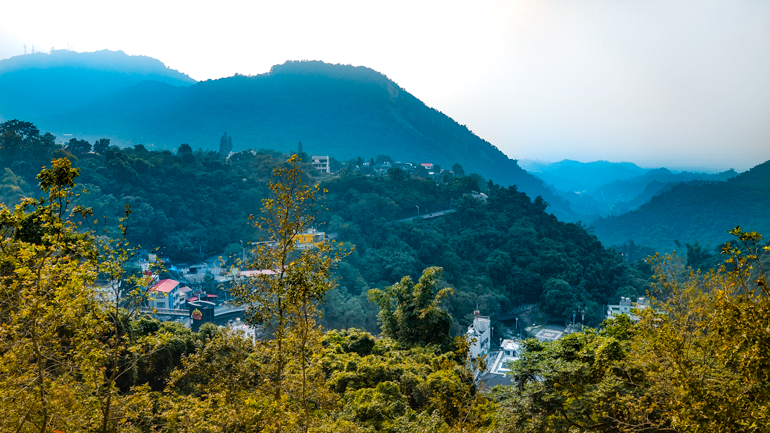
Water and Fire Cave
Not far southwest of the town is the Water and Fire Cave. Methane and boiling-hot mineral water – and mud – pour forth from a cliff-face fissure here, and the methane has been ignited. Water and flame seem to magically mix together, in a paradoxical phenomenon locals long ago dubbed “fire in water and water in fire.” The flames, today about a meter high, once shot out about three meters, and have licked the grotto black.

Biyun Temple
Ornate Biyun Temple, the “Temple of Azure Clouds,” is close by. The temple is by roadside, and the temple complex climbs up a soaring, steep mountainside. The Jianan Plain is spread out far left to far right before you, as though you’re sitting in a theater watching a widescreen movie. You’ll see monks quietly moving about on-site, and unusual practices such as exorcisms are common. In the temple’s rear is a dragon sculpture on a cliff-side wall from which sacred, drinkable mineral water trickles, eagerly bottled up by local tourists.
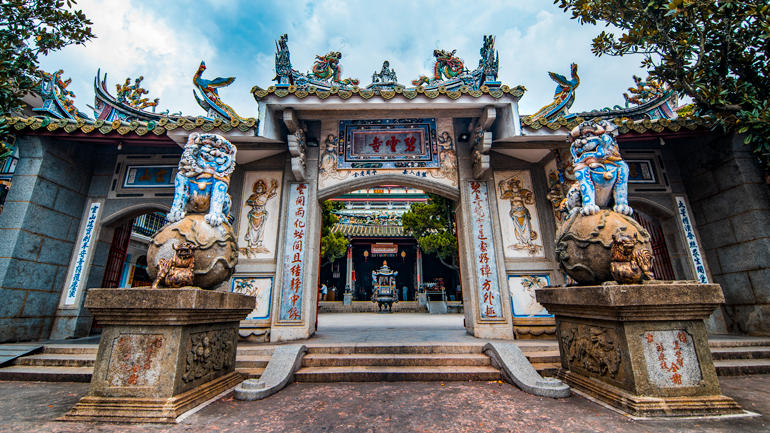
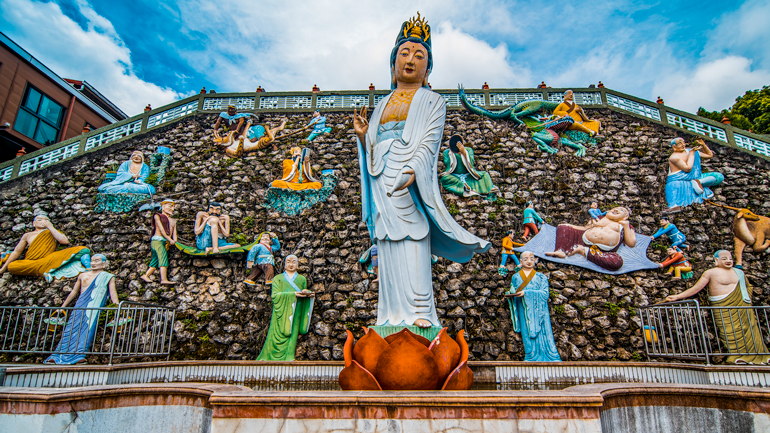
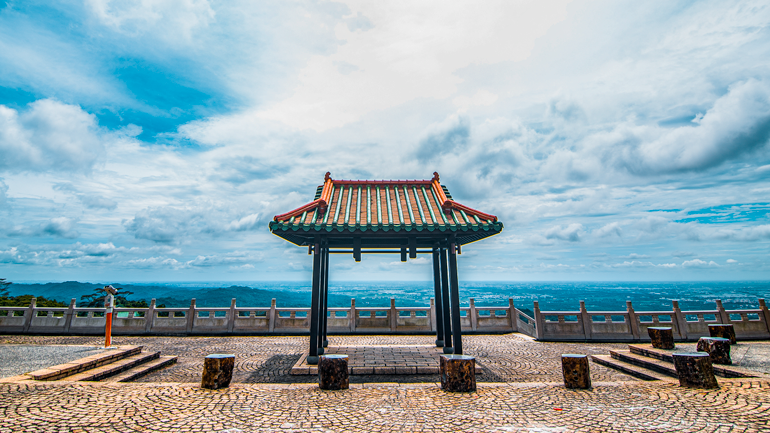
Wushantou Reservoir
Further south still, again on the lip of the central-mountain foothills where they abruptly give way to the Jianan Plain, is the large, scenic Wushantou Reservoir. Its intricate, zigzagging shoreline inspired the old name “Coral Lake.” A total of 30 waterways flow into this emerald-green body of water, which sprouts over 100 islands. The water flowing from the 6,000ha reservoir forms a lovely high waterfall. There is an information center on the hydropower facilities located beside the spillway, and with advance notice guided-tour access to the hydropower facilities spanning the spillway is also provided, with visitors allowed to temporarily control the water flow utilizing some of the still-operational antique equipment, crafted by Hitachi in the early 20th century. Guided boat tours of the reservoir are also given. Guide service is in Chinese and Taiwanese. Other lake-area attractions are peaceful Zhongzheng Park, atop a hill, temple facilities, a barbecue area, camping area, lakeside trail, water park, and small aviary/garden.
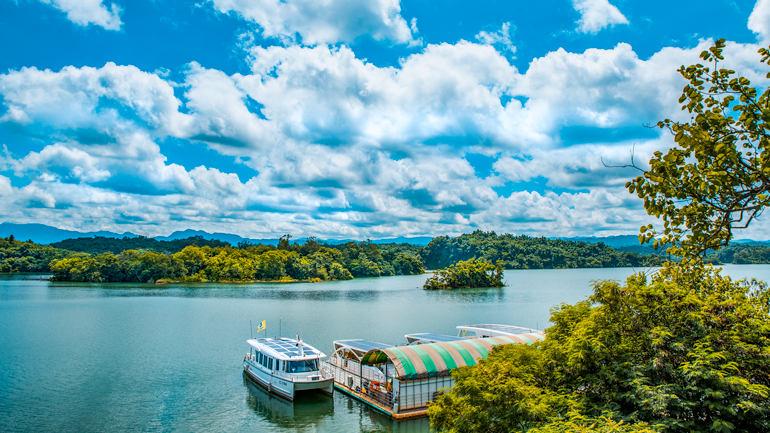
Yoichi Hatta Memorial Park
The Yoichi Hatta Memorial Park honors the talented and dedicated Japanese civil engineer who designed/built the reservoir and the Jianan Plain irrigation system from 1920 through 1930, along with other important waterworks around Taiwan. In the park is his restored residence, filled with period furniture and other items. In one of the other restored wooden Japanese buildings, visitors enjoy performances given on the Chinese zither by a master, who also explains displays on the zither-making process.
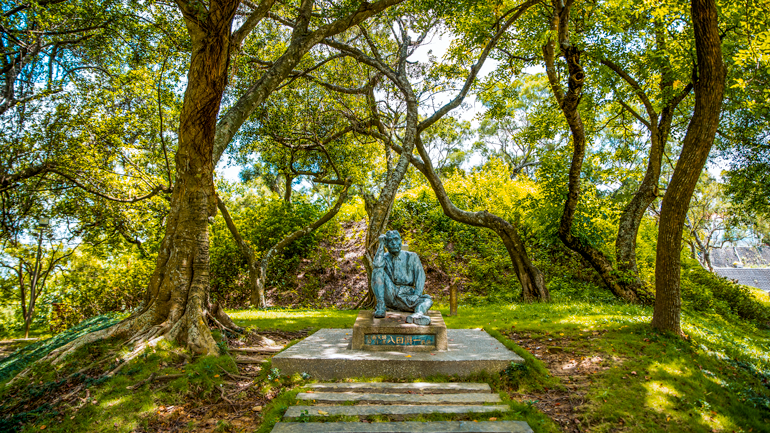
Yoichi Hatta’s gravesite overlooks the reservoir; he was killed at sea in 1942 in an Allied attack, his body later found and brought here.
Practical Information
The places introduced in this article are physically closer to the city of Chiayi than to Tainan’s urban core. Car rentals are available at Chiayi’s high-speed rail station, and both car and scooter rentals are available outside Chiayi’s regular-rail station.
For more information on this article’s recommended sites, visit the website of the Southwest Coast National Scenic Area (swcoast-nsa.travel) and the Siraya National Scenic Area (siraya-nsa.gov.tw).
Also read:
Taiwan’s Charming SOUTHWEST COAST
Spending Time in the OLD CITY of TAINAN
A Day in Scenic SOUTHWEST TAIWAN
Charming SIRAYA National Scenic Area
Taiwan Scence
3 Water-based Attractions in Tainan You Probably Didn’t Know About
About the author

Rick Charette
A Canadian, Rick has been resident in Taiwan almost continually since 1988. His book, article, and other writings, on Asian and North American destinations and subjects—encompassing travel, culture, history, business/economics—have been published widely overseas and in Taiwan. He has worked with National Geographic, Michelin, APA Insight Guides, and other Western groups internationally, and with many local publishers and central/city/county government bodies in Taiwan. Rick also handles a wide range of editorial and translation (from Mandarin Chinese) projects.











